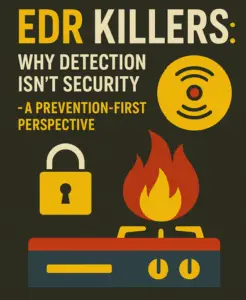In the dynamic landscape of cybersecurity, BLOKWORX is frequently approached by MSPs requesting either vulnerability scans or penetration tests. However, it’s crucial to distinguish between the two and understand their respective roles in fortifying network security.
Passive vs. Offensive Testing:
At the core of this distinction lies the nature of the tests – passive vs. offensive. Vulnerability scanning is a passive process, utilizing automated tools to identify potential weaknesses in network infrastructure and software. On the other hand, penetration testing is an active, offensive strategy employing ethical hackers to simulate real-world attacks and exploit identified vulnerabilities.
Vulnerability Scans:
Vulnerability scans serve as a scorecard for networks, pinpointing areas of potential exploitation in a non-intrusive manner. These scans are valuable in identifying poor infrastructure configurations and code gaps, offering a to-do list for infrastructure hardening. Regular scans, ideally performed quarterly, provide an ongoing security posture assessment.
Penetration Testing:
Penetration testing goes beyond passive assessment, actively attempting to breach network defenses. Conducted less frequently – after significant changes – these tests reveal exploitable risks and simulate the potential impact of a data breach. It’s an offensive strategy that vividly highlights vulnerabilities in the network.
While vulnerability scans and penetration tests are crucial components of cybersecurity, they have limitations. A large portion of successful breaches are a result of zero-day attacks, which neither scan nor test can fully address. To combat this, advanced endpoint protection, such as BLOKWORX MAED service, offers a solution with deep learning capabilities, identifying and preventing zero-day threats.
Where Most Vulnerability Scans Fall Short:
Despite their importance, vulnerability scans can fall short in three key areas:
- Limited Visibility: Some scans focus on workstations, leaving gaps in overall network visibility. A comprehensive scan, such as that offered through BLOKWORX MVAP service, should cover workstations, servers, IoT devices, network devices, and all endpoints.
- Lack of Framework: True vulnerability scans align with frameworks like MITRE, providing standardized and detailed results. Scans without a clear framework lack in comprehensiveness.
- Utility and Compliance: Many platforms have limitations in scanning capabilities, failing to meet compliance criteria. A complete solution must execute various scans, including web application scans, port and service scans, and authenticated/unauthenticated scanning.
In conclusion, a robust cybersecurity strategy involves a combination of vulnerability scans that precede penetration tests, and advanced protection. Understanding the nuances of each tool empowers businesses to proactively defend against cyber threats. Regular assessments, coupled with advanced preventive measures, create a resilient defense against evolving cybersecurity challenges.




